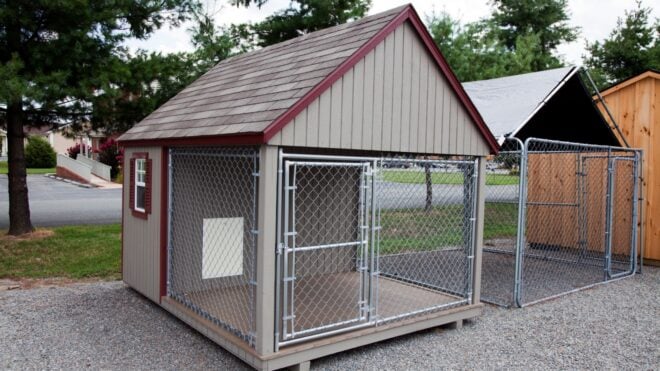
Think back to when you were a teenager for a moment. You were maybe 16 or 17 years old and the day that you got your driver’s license was a huge deal. You no longer needed your parents to drive you everywhere and you immediately became the cool one in your group of friends because along came this incredible new sense of freedom that you were able to provide for everyone.
Even though getting your driver’s license is such a big milestone for most teenagers, that doesn’t mean that it doesn’t come with a ton of stress for parents. Not only will you worry every time your child goes out the door with keys in hand, but you’ll also likely find yourself nervously sitting in the passenger’s seat while providing your teen with vital driving guidance.
If you’re not exactly sure where to start and what to cover when you get in the car with your newly licensed teen, we’re here to help. So, let’s buckle our seatbelts and check our mirrors because here are six crucial things you won’t want to leave in your rearview when teaching your teen to drive.
1. Begin with a simple tour of the vehicle and all of its most-used controls and features.

No matter what kind of car you’re training your teenager to drive in, there’s just no way that they will know what every control or feature is for and when they are supposed to use them when they're just beginning.
Whether they’ve simply studied online so far or had a few driving tests with an instructor, State Farm notes that it’s important to give your teen a “tour of the vehicle” prior to driving to ensure that they know and remember all of the basic tasks that you may not even think about but are very important to ensure a safe drive.
Things like adjusting the steering wheel and seat so they’re sitting in the proper position, and reminding them where the turn signal is as well as where you can turn on the headlights, can immediately remind them of the basic features they need to know but may find themselves quickly forgetting when they feel nervous.
2. Remember that your teen may feel quite nervous, so allow them to start in a stress-free environment like an empty parking lot.

Another tip that’s important to remember is that you should never underestimate just how dangerous it can be to allow a teenager to drive for the first time on a busy road under unpredictable conditions.
Colonial Driving School recommends taking your teen to learn in an empty parking lot for at least three lessons, which provides them with a “low-pressure environment” to practice their driving skills and allows them to get comfortable just being behind the wheel and maneuvering a car.
The driving school suggests having your teen practice important skills in a parking lot, like starting the drive off smoothly and coming to gentle stops, making precise turns, and backing up and parking. Practicing all of these driving routines in a safe environment and becoming good at them will only help them to become a more confident and proficient driver on busy public roadways.
3. Have them drive a familiar route that they’re going to need to learn to drive anyhow during their lessons.
Think about your own daily driving routes. When you’re going to work or dropping the kids off at school, there are roads and certain ways to get there that just make the drive easier and shorter, so they’re usually the route you choose to take.
AMA Insider notes that it’s helpful when you’re teaching someone to drive to choose familiar routes to travel on because they’re going to have to learn and get used to the overall conditions and speeds on those routes anyway.
Be sure to bring your teen out for a driving lesson during different times of the day as well. This will help them catch onto traffic patterns and how you need to safely adjust your driving to the flow of traffic.
4. Be sure to have them follow the rules of the road to help ensure safety for everyone out there.
Not only are speeding tickets a hard lesson to learn because they can often come with a hefty price tag, but it’s also imperative that you teach your teen to follow the rules of the road because it helps to cut down on needless accidents and distracted driving habits.
While you’re in the passenger seat, you can easily point out the speed limits that they need to abide by and when there’s a change. It’s also helpful to teach them to be aware of all roadway signage, including detours, school zones, and where they’re not allowed to make left-hand turns.
Liberty Mutual suggests that both you and your teen always be aware of the state’s rules and regulations in relation to their driver’s permit as well. For example, there are often different stages to obtaining a permanent driver’s license and when they start out, they may not be able to drive during the evening hours or in different locations. It’s important to stay on top of that to keep everything legal and safe.
5. Try your hardest to remain patient and calm because no teen learning how to drive is perfect.
Another vital point to teach your teen while learning to drive is to avoid distracted driving at all costs because it can ultimately lead to driving accidents. One of the ways you can avoid distracted driving and keep an alert and clear mind is by remaining calm and composed while you’re on the road.
It can often be a stressful task being a parent who’s teaching their teenager to drive, but Vanderbilt Health notes that if tempers start to flare or patience starts to dwindle, both for yourself or your teen, it’s likely time to safely pull over and stop the driving lesson for the day.

More from LittleThings: This 14-Year-Old May Change The World With The Lifesaving Drone He Invented
If things happen to get really bad between the both of you during the driving lessons, they also suggest that it may be time to get someone else, like your co-parent or another trusted adult, to take over for a few lessons to better help your teen learn how to drive.
6. It’s helpful for teens to practice driving on a regular basis and in all sorts of different driving conditions.
Remember when you were learning how to drive and you took the car out for the first time in wintry weather on snow-covered roads? It’s quite different from a sunny and dry day in the fall.
Family Education suggests not skipping out on driving lessons with your teen when it’s snowing or raining because it’s really important for them to learn and practice driving in harsher weather conditions under your supervision.
You can teach them what to do if they lose control of the vehicle on a snow-covered road or if the streets feel slick from heavy rain. After a few lessons, you can also take them out during heavier traffic times or on different routes to learn how to maneuver themselves safely in a vehicle through various roadways and weather conditions.




